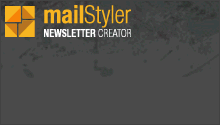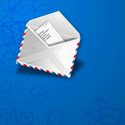How to Effectively Use Images in Email Marketing

They say a picture is worth a thousand words, and that is definitely true in the world of email marketing.
A well-placed image can get the attention of the viewer much more easily than a block of text, and the proper use of images can improve response rates and boost sales.
Unfortunately, too many email marketers fail to use images properly. Using images poorly can be worse than not using images at all, resulting in viewing problems, improperly rendered pages and frustrated customers. Before you embed that first image, it is important to understand the rules and guidelines.
Legal Rights to the Images
Perhaps the most important thing is to make sure you have the legal right to use the images. You can, of course, use any picture you took yourself, but the waters are murkier when using someone else’s image.
Before using any image, it is important to check its copyright status. If you are unclear about the legality of using the image, be sure to contact the owner and ask permission. Do not simply use the image and add a note about the photographer. If you do not want to bother with copyright issues, you can simply search for public domain images. These images are free to use and easy to find.
Add Alt Tags
Many email clients block images by default, as a safety measure. It’s important to always add Alt tags to images because even if with images suppressed by default, many email programs will display the provided alt text instead. The text should be brief, compelling and descriptive. Be sure that each of your images has one!
Double-Check the Rendering
One of the problems with images is that not all email services will render them properly. That is why it is so important to check – and double-check – the rendering of your images. It is better to catch any problems right away, rather than risk that your customers will not be able to view the images you have so carefully chosen.
Watch the Size
The size of the images you choose is a critical factor. Choosing images that are too large will be counterproductive, since it will take those images far too long to load. A good rule of thumb is to make sure images are no larger than 72 dpi. You can reduce the size of your existing images using a simple photo editing software package.
If you need to resize your images, be sure to consider the templates you are using. The template will somewhat restrict the size of the images, so check carefully as you work.
Prepare Your Images Carefully
No matter where you get your images or how you plan to incorporate them into your email marketing, it is important to prepare carefully. That means looking at the email template you plan to use, resizing the images appropriately and checking the results carefully before sending a single email. The more preparation you do on the back end the better your marketing materials will look to your customers.
Use Hyperlinks as Marketing Tools
Be sure to use hyperlinks with your photos and images. These hyperlinks can link to email addresses, websites, blogs and other business sites. You can use hyperlinks with not only photos but logos and custom images as well.
Use the Right File Format
As you search for and load your images, keep in mind that jpg and gif are the most common formats. It is best to stick to those types of images and avoid png files if at all possible. If you must use a png image, keep in mind that it will not be supported by all web browsers.
Following these simple rules will help you get the most out of the images you add. Using images and photos effectively is a big part of email marketing success, so it really pays to understand these basic guidelines.


